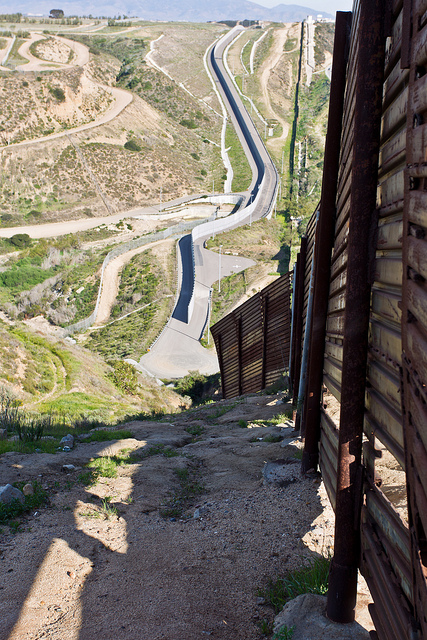Arizona Mayors Share County On Mexican Border, But Not View On Immigration Reform

 By Danielle Schlanger, Huffington Post Latino Voices
By Danielle Schlanger, Huffington Post Latino Voices
Cochise County, Ariz., a rural swath of desert larger than Connecticut and Rhode Island combined, shares an 82-mile border with Sonora, Mexico. Daniel Ortega, Jr., the Democratic mayor of Douglas, and Adriana Badal, the independent mayor of Bisbee, lead two different border towns in Cochise. Undocumented immigrants cross the border near their cities. Long lines form at the border crossings. And residents suffer from poverty that both mayors believe could be alleviated by more business from Mexico — though both also worry that immigration reform from Congress won’t help the region economically.
But the mayors’ perception of border security is markedly different: Ortega believes that a wall is a necessity, Badal thinks migration will happen regardless. Ortega supports more manpower at his city’s border crossing, Badal says her town is a militarized zone and there’s enough security already.
That two people could share a segment of the border, hold similar responsibilities over it, and still have dramatically different opinions about what to do with it is a testament to how complicated the issue of immigration reform has become. It also doesn’t bode well for the immigration legislation’s chances in Congress.
As lawmakers in Washington debate legislative solutions, they are increasingly looking to border leaders for guidance. A bipartisan bill that passed in the Senate 68-32 on June 27 would send 20,000 additional border patrol agents, 700 miles of fencing and billions in funding for surveillance to the border. Many House Republicans say those security measures still aren’t enough, and in the end, if reform passes, it may mean that resources to border regions go up — whether or not border mayors want them. And not everyone on the border thinks that’s a good idea.
“In my community, I do hear a lot of people say that there are too many border patrol already,” Badal said. “They feel that this is a militarized zone.”
Bisbee, with a population of 5,500, relies heavily on tourism to sustain its shrinking economy, but the town often faces an uphill battle encouraging tourists to travel so close to the border when reports of Mexican cartels, murders and trafficking hit the news.
While Badal said she knows undocumented immigrants still cross the border through Bisbee, the community doesn’t fear those traveling through and heading north. She said she doesn’t think most border-crossers are violent, and that apprehensions in the area are down because fewer people were crossing at all. The mayor said that instead, many in Bisbee believe there is already too much police presence.
“I don’t think that we’ll ever be able to keep them out, no matter how high that wall goes or how long it is, they will find a way if they’re starving in Mexico and we have opportunities for them here,” she said.
Ortega, in contrast, sees the wall as a necessity.
“Years ago, there were more people just crossing,” he said. “They weren’t causing harm. They weren’t violent. They weren’t armed. It’s a different story today.”
He said people crossing the border are more likely to be smuggling drugs, or engaging in illicit activity, than they were in the past.
“Before, it was people looking for work crossing. They were more humble, and sometimes ranchers would see them and try to help them if they could. But now it’s scary for [the ranchers],” Ortega said. “These are their words.”
Ortega referred The Huffington Post to Kelly Glenn-Kimbro, a fifth-generation cattle rancher on the outskirts of Douglas. The south boundary of one of Glenn-Kimbro’s ranches is the Mexican border, and she reports to have seen …
Click HERE to read the full story.
This article was first published in Huffington Post Latino Voices.

